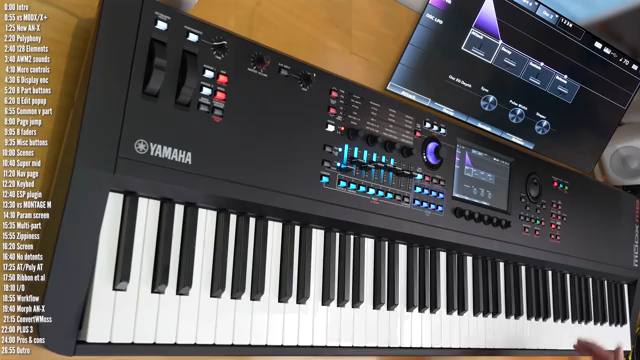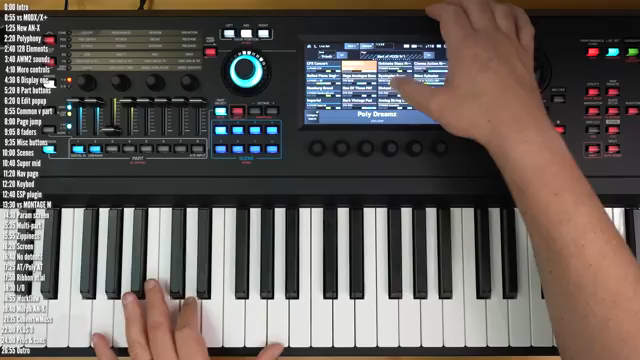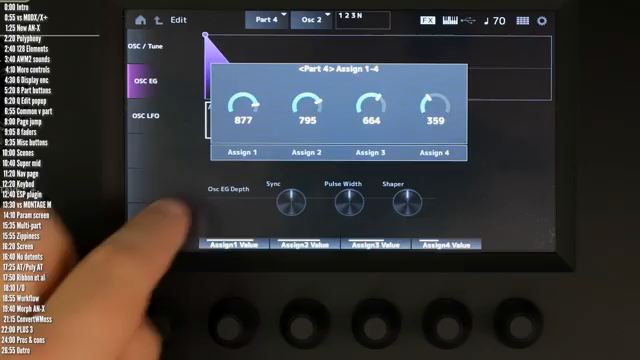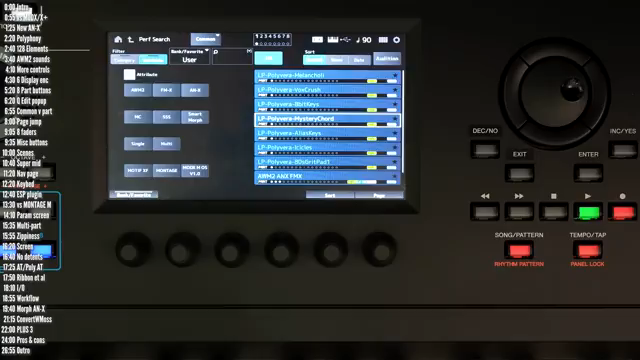Picture this: a head-to-head battle in the synth arena, with Loopop at the helm. This time, it’s Yamaha’s MODX-M taking on its own kind, the MODX+ and the Montage M. Loopop, as ever, dives in, leaving no oscillator unturned, giving us a raw and comprehensive look at whether this gear is a hit or a miss. Grab a pint, settle in, and let’s see what Yamaha’s latest concoction has to offer.

A New Challenger Approaches
The video kicks off with Loopop introducing the MODX-M, Yamaha’s latest offering in their synth line-up. It’s touted as a more affordable alternative to their flagship Montage-M. Loopop sets the stage for a comprehensive dive into the differences between the MODX-M, the previous MODX models, and the more premium Montage-M. Right from the start, Loopop makes it clear: this isn’t just a surface-level review – get ready for a deep, technical exploration of the synth’s capabilities.

"The biggest internal difference is that the MODX-M now has a brand new A&X engine."
Under the Hood

"The ESP plugin, just like Montage-M users, stands for Expanded Soft Synth Plugin."
Loopop delves into the MODX-M’s new A&X engine, a virtual analogue powerhouse designed for sound design enthusiasts. He contrasts it with the sample-based AWM2 and FMX engines, highlighting the enhanced polyphony and the increased storage capacity compared to previous models. While the Montage-M still holds some advantages in polyphony and sample storage, Loopop assures it’s not a deal-breaker for those looking to explore the wide array of sounds the MODX-M can produce.
Hands-On Experience
Loopop takes us on a tour of the hands-on controls of the MODX-M, noting the significant improvements over previous iterations. The six new endless detent encoders get special praise, proving to be incredibly useful for tweaking synth parameters on-the-fly. Loopop appreciates the convenience these controls offer, enhancing the overall workflow compared to the older MODX series. He also highlights the practical navigation features, like the part and common buttons, which provide a faster, more intuitive setup for both live performances and studio work.
Another addition catching Loopop’s interest is the increased number of scene buttons, allowing users to access a wider range of performance variations. The user-friendly interface makes exploring sound design elements more engaging and less of a chore. Furthermore, the MODX-M doesn’t skimp on connectivity options. Loopop carefully explains the MIDI integration and the availability of USB ports, making it a solid choice for those with complex live rigs.
Loopop’s detailed breakdown extends to the new keybed and future potential with the ESP plugin. Noting its absence of aftertouch, he advises trying out the different keybed versions in-store to get the best feel. The ESP plugin promises to expand the MODX-M’s capabilities, providing software integration that unlocks new dimensions for performance and sound design.

"The all-plastic body of the MODX-M offers a more portable solution without skimping on sound compatibility."
Head-to-Head with Montage M
In the comparison with the Montage M, Loopop showcases the MODX-M’s strengths and trade-offs. Although it lacks some of the high-end features like polyphonic aftertouch and a ribbon controller, the all-plastic body of the MODX-M offers a more portable solution without skimping on sound compatibility across Yamaha’s platform. He explains that while the Montage M leads with a more advanced parameter screen and additional control options, the MODX-M isn’t far behind, making it an impressive competitor considering its price point.
Loopop highlights the fact that both units share the same sound engines and core capabilities, dispelling any myth that you’d be missing out on the quintessential Yamaha sound if you choose the less expensive MODX-M. And true to his thorough style, Loopop elaborates on the connectivity and control similarities, ultimately positioning the MODX-M as a formidable choice for musicians seeking flexibility without the extra heft of the Montage M.
Smart Morph and Innovations

"The strength of this platform is the sheer number of sounds that it has and the speed with which they can be loaded."
A standout segment is Loopop’s exploration of the Smart Morph feature, versatile and now available for ANX sounds, in addition to FMX. He walks us through the capabilities of Smart Morph, demonstrating how it allows users to blend multiple sounds seamlessly, creating unique soundscapes. Additionally, he touches on the utility Convert with Moss, emphasizing its role in expanding the MODX-M’s sample library capabilities. This tool facilitates conversions across different sound formats, which Loopop shows can greatly expand your creative arsenal when combined with Yamaha’s hardware.
Pros and Cons
Loopop dives into the pros and cons of the MODX-M, holding no punches. On the pro side, the instrument is praised for its affordability and feature set that closely mirrors Yamaha’s premium offerings. It’s a sound designer’s playground, packed with a bounty of presets and the ability to handle complex sound-layering tasks effortlessly. Loopop highlights the strength of its arpeggiators and the breadth of its sound transitions.
However, the MODX-M isn’t without its faults. The complexity of its features demands a steep learning curve for new users. Loopop notes that the lack of on-board sampling and the relatively basic sequencing capabilities could be a setback for some. Despite these drawbacks, he emphasises the MODX-M’s potential as a powerful tool for those willing to delve deeper into its multitude of features.
Final Thoughts
Concluding the review, Loopop reiterates that while the MODX-M packs a punch, it demands commitment from its users. He extols its versatility and the substantial functionality crammed into its lighter frame. As he wraps up, he notes the MODX-M’s position as a genuine alternative to heavier, more expensive models, offering Yamaha’s trademark quality without the added bulk or cost. It’s a solid choice for performers and sound designers alike who seek depth and portability in one neat package.
Latest articles
Watch on YouTube:
https://www.youtube.com/loopop
Links from loopop:
Sponsored links:
If you purchase via these links, we may earn a small commission – at no extra cost to you.
🔗 Check price on Amazon
🔗 Check price on Amazon